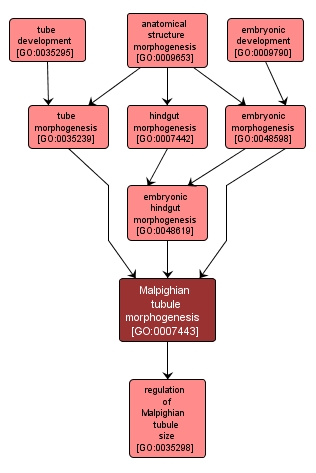| Desc: |
The process by which the anatomical structures of the Malpighian tubule are generated and organized. This process takes place entirely during the embryonic phase. Morphogenesis pertains to the creation of form. A Malpighian tubule is a fine, thin-walled excretory tubule in insects which leads into the posterior part of the gut. |














